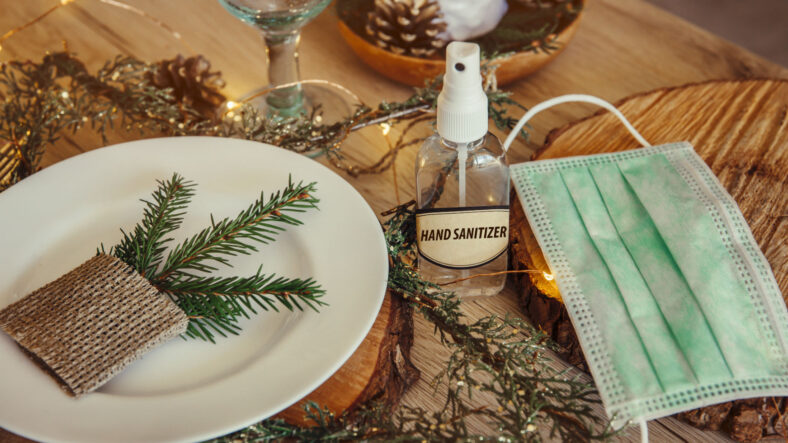
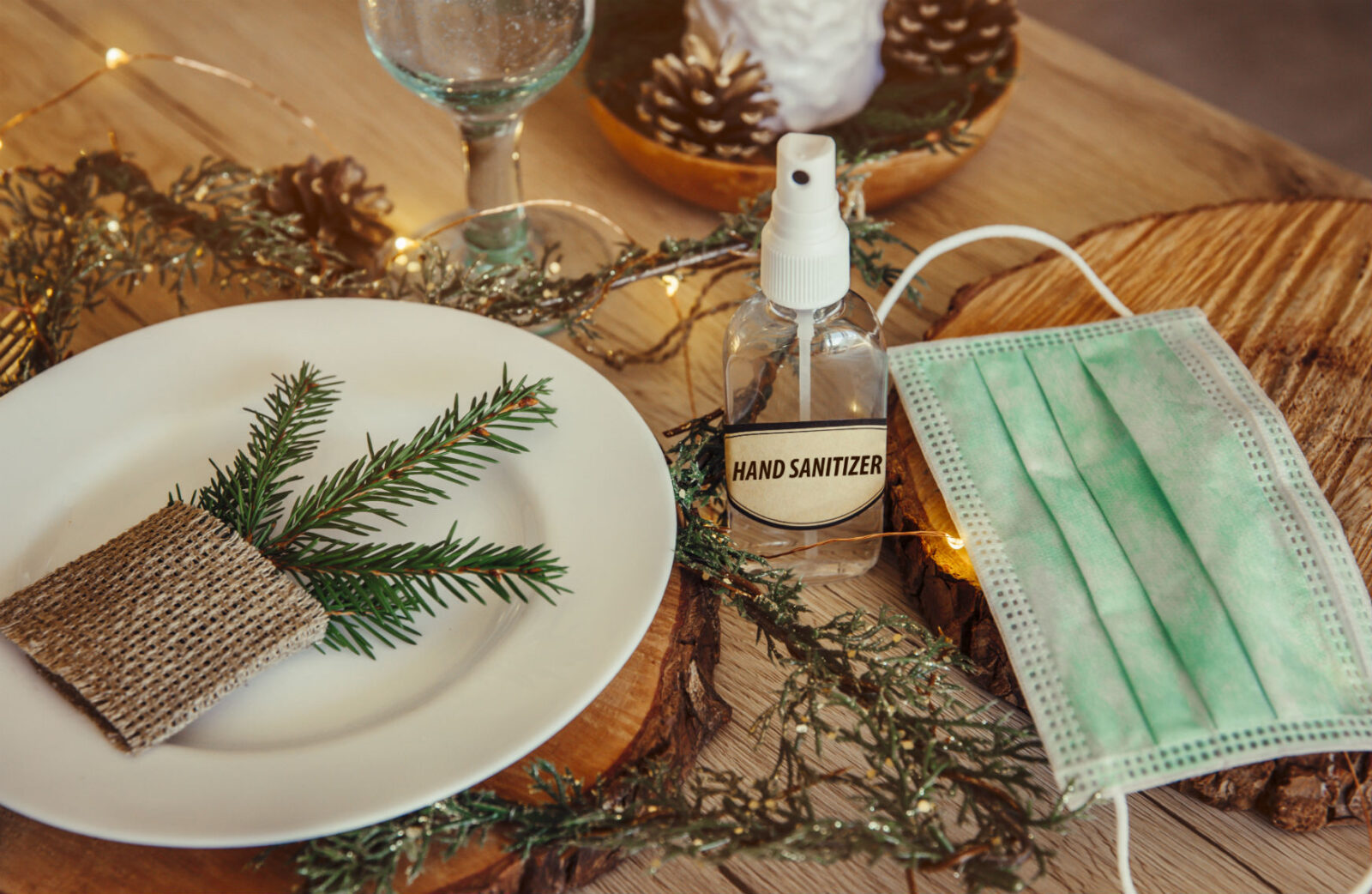
Let’s start with the caveat: Experts unanimously agree that the only type of safe gathering this holiday season is essentially no gathering at all. “My recommendation this year is to stay home if possible,” says Dr. Charlene Brown, MD, a physician in the Washington D.C. area. That being said, it’s been a tough year, and the urge to be with loved ones and experience those joyful holiday traditions is stronger than ever.
For those who are planning to host or attend a holiday gathering, there are things—emphasis on things, plural—you can do that will mitigate COVID-associated risk, at least to a certain extent. “There’s not one single factor you can follow and say, ‘because we did this one thing, we’re safe,' but you can make an event much safer by taking a multi-layered approach to reduce risk,” explains Dr. Daria Long (AKA Dr. Darria), an emergency room doctor and Clinical Assistant Professor at the University of Tennessee.
Dr. Long likens it to driving a car: You wear a seat belt, have airbags, obey the speed limit, and don’t drive while intoxicated. “Not one of those single things guarantees that you won’t be injured in a car accident, but together they all significantly reduce your risk,” she says. “Think about it the same way when it comes to COVID; it takes a multi-layered approach.”
Ahead, some of the ways you can significantly reduce your risk when planning a safe holiday gathering during COVID. Though, again, we underscore the fact that the advice to come is by no means a fail-safe.
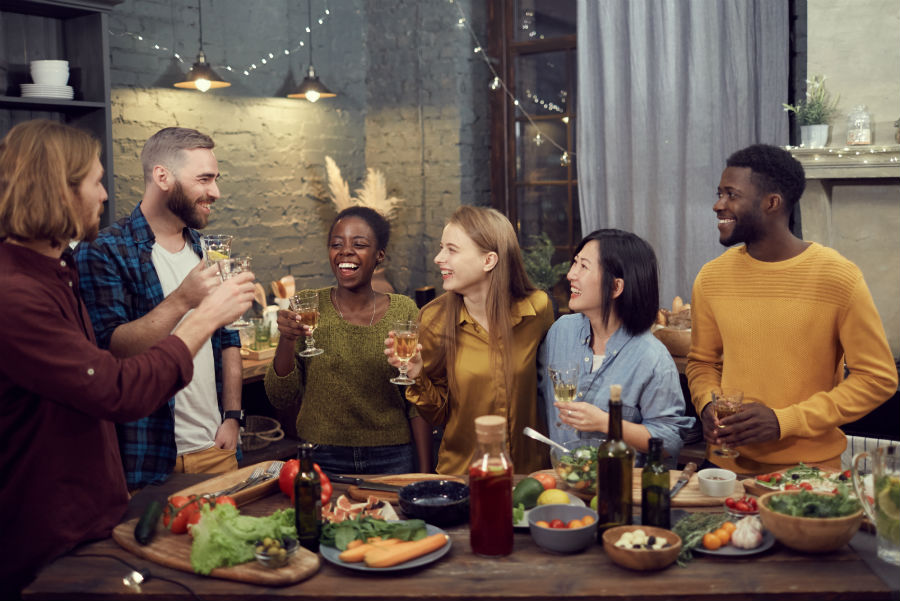
Keep Gatherings Small
Gatherings or parties with more people, especially people from outside your immediate household, pose more risk than those with fewer people. While the CDC does not have a limit on the number of attendees for gatherings, the general rule is no more than 10 people. “The size of a holiday gathering should be determined based on the ability of attendees from different households to stay 6 feet (2 arm lengths) apart,” reads recently released guidance. (Note: Some states and/or cities do have gathering limits.)
You should also consider keeping holiday gatherings short and sweet. According to the CDC, gatherings that last longer are more dangerous than those that are shorter. In keeping gatherings short, experts recommend skipping activities like family flag football, dancing and singing, attending local parades, and even gift exchanges.
Anyone who is high-risk should avoid in-person holiday gatherings altogether and attend virtually instead. Zoom is lifting its timed limit for free virtual meetings on Thanksgiving Day, so “your family gatherings don't get cut short” after 40 minutes.
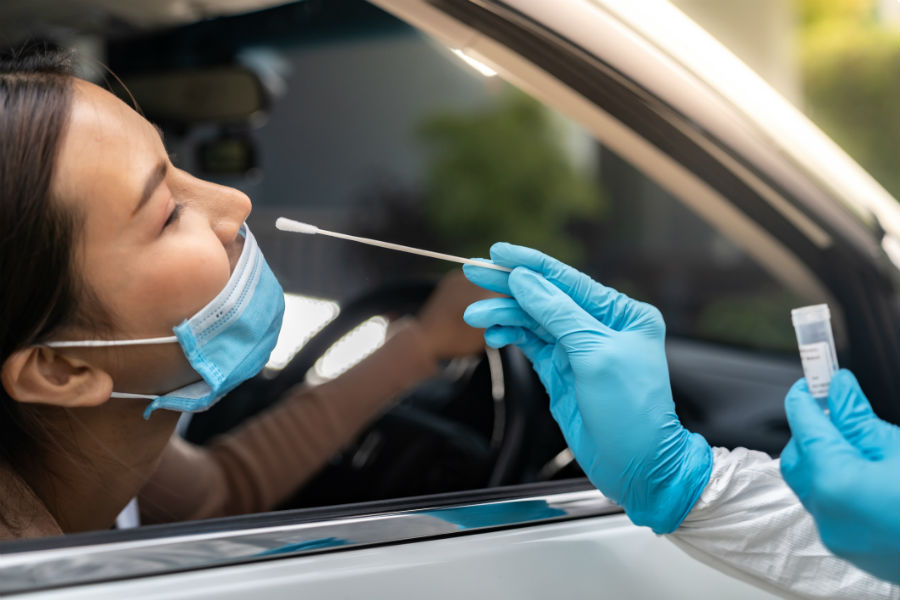
Quarantine, And Test Frequently
All of the experts we spoke with agree that, while helpful, testing is by no means a free pass—even if you get a negative test. “A COVID-19 test is simply a snapshot in time. A negative result does not mean an individual isn’t infected, nor is it a license to not socially distance,” explains Dr. Darria. “It only means that, at that particular moment, the sample didn’t show viral levels high enough to be reliably measured. You could test positive even just hours later.”
Her advice: Quarantine for two weeks prior to the event, and take a test twice—getting the results—before you go. (It should go without saying, but if you test positive, you definitely should not be going anywhere.) And, ideally, all of the would-be attendees should follow the same protocol, she adds.
Post-gathering, you’ll also want to consider both a two-week quarantine, as well as another test three to five days following the event, says Dr. Brown, especially if you believe someone tested positive or suspects they had the virus. She also points out that there are now FDA-authorized, at-home tests, like the Everlywell Covid-19 Test Home Collection Kit ($109; everlywell.com), which can help you quarantine and isolate rather than having to leave and visit a testing facility.
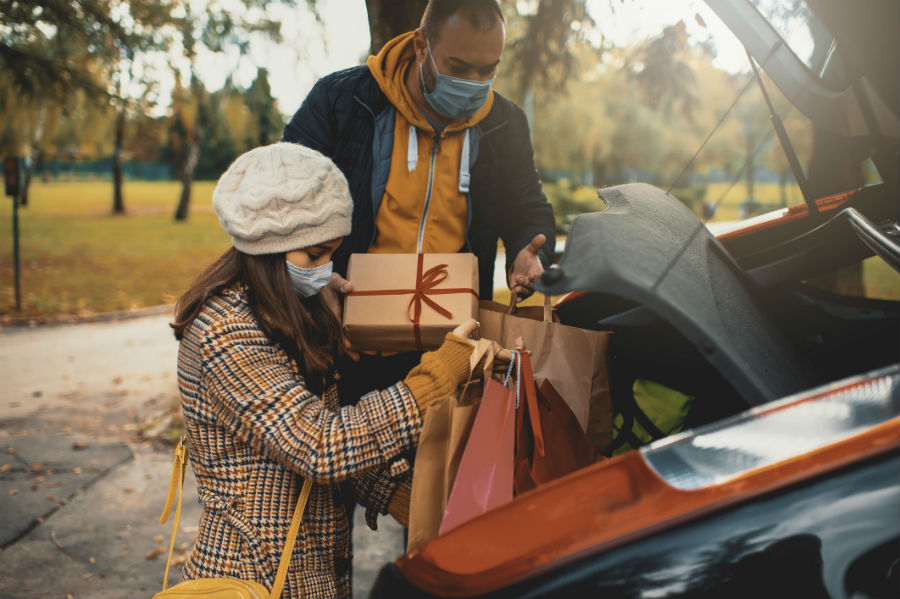
Take Precautions When Traveling
“I have to preface this by saying that it’s not particularly safe to travel right now, especially on public transportation,” cautions Dr. Brown. “That said, look at case numbers both where you’re coming from and also where you’re headed. The lower the percentage of positive cases in the area, the better,” she says. Also, keep in mind that many states currently have specific rules in effect for quarantining when coming from other parts of the country.
The good news? Airplanes are fairly safe, says Dr. Darria. If you do plan to fly in an airplane, wear a mask and face shield (yes, two layers of protection) for the duration of your travels—that means both in-flight, throughout the airport, and in cabs to and from—wash your hands frequently, and follow local social distancing guidelines. It’s also worth trying to fly on airlines that are blocking the middle seat, suggests Dr. Darria. She cites a recent study that indicates the risk of contracting COVID-19 from a nearby passenger on a plane is 1 in 4,300, but only 1 in 7,700 when the middle seat is blocked.
Still, while the advanced filtration systems on planes do filter out nearly all airborne virus particles, you still have to consider the other components that come into play with flying, things like security lines, baggage claim, common places of contact onboard, and more, Dr. Darria points out. (Hence the mask on at all times rule.) Another good tip: “If you’re traveling on any form of public transportation, the earliest departures of the day are best, since airplanes, trains, and buses are more likely to be heavily disinfected overnight,” she adds.
Car travel remains the safest option, given that you’re driving solo or only with people from your household. In a rental car, Dr. Frank Ong, MD, chief medical and scientific officer at Everlywell, recommends wiping down the most common touch points yourself: the steering wheel, gear shift, door, window, seat handles, controls, seat belts, mirrors, radio, and visors.
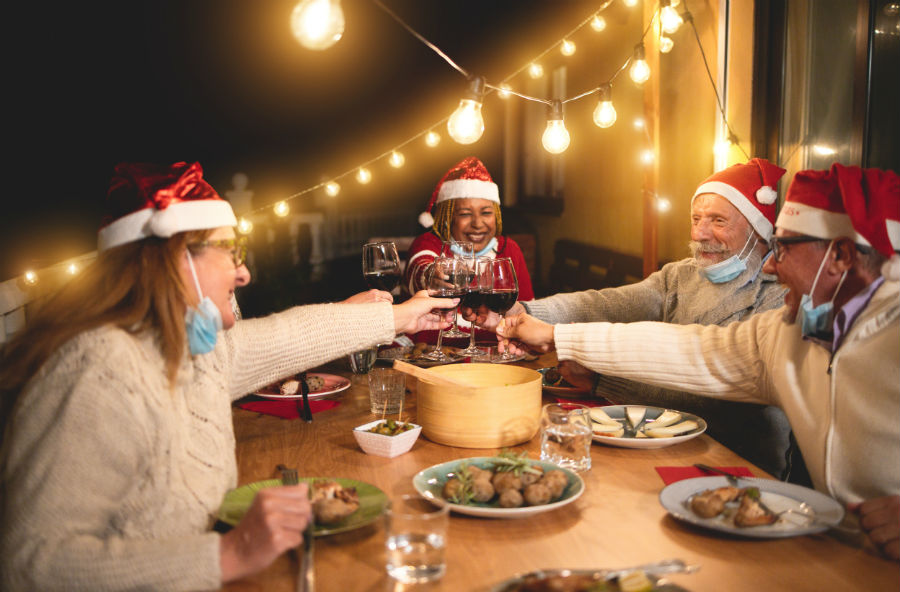
Minimize Risk Indoors
Outdoors is preferable to indoor gathering, but if that’s not an option, do what you can to improve ventilation in indoor spaces, including opening windows or exterior doors when possible, recommends Dr. Ong. “Even opening doors to other rooms and hallways is beneficial. More fresh air means lower risk,” he says. Running the exhaust fans—like those in the bathroom and over the stove—can also be beneficial, as is investing in HEPA air purifiers, adds Dr. Darria.
Other helpful guidelines: Have people eat in ‘pods’ of only immediate family, with each group about six to 10 feet apart, suggests Dr. Darria: “This way when people do have their mask removed, they’re still only with their household.” When not eating, have everyone wear their mask indoors. And sorry to tamp down the holiday cheer, but this is not the year to be getting tipsy with the fam. “Be mindful of alcohol consumption,” warns Dr. Brown. With reduced inhibitions, you may speak louder or shout, thereby, increasing transmission risk, she says. (Not to mention you may be more likely to ditch the mask.)
Finally, you'll want to stock up on supplies to help guests stay healthy, or ask them to bring their own. This includes hand soap and sanitizer, extra disposable masks, single use towels, and disinfecting wipes. Decorative signs that encourage guests to practice good hygiene and watch their distance, like these on Etsy, are a cheeky way to remind everyone to stay diligent in protecting their health.
The Bottom Line
The holidays are going to be less cheery and likely more stressful this year. The safest thing you can do for yourself and others is put those large family gatherings on hold until 2021. But, if you are going to be celebrating with others, taking all of the appropriate precautions is the very least you can do to stay safe. “You don’t want to do anything that lowers your safety radar,” says Dr. Brown.
You might also like: Ready To Get Away? 6 Signs It's Safe To Rent An Airbnb
We do not claim these techniques will kill or stop the spread of coronavirus. Please visit the CDC website for more information.
We often receive complimentary products for review at Glam. Each product we feature has been independently selected and reviewed by our editorial team. If you make a purchase using the links included, we may earn a share of the revenue from our affiliate partners.
